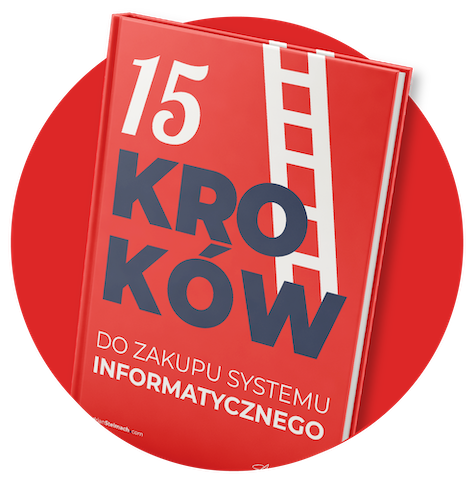
NEWSLETTER
Wpisz swój adres e-mail i zyskaj e-booka
Bez niechcianej poczty ani reklam
Tylko merytoryczne treści z obszaru digitalizacji produkcji

The presidential election is behind us. Some are analyzing the results, others are analyzing the memes, and some – like me – are asking themselves a different question: Is digitization of the electoral process possible in Poland, and how realistic is the implementation of electronic voting systems?
For many years, we have been using digital tools in various areas of life to save time, increase accessibility and data security. Digitization has become a standard in administration, banking, health, among others. But what about e-voting?
I invite you to read an article in which I analyze whether elections in Poland can be partially or fully automated, and what technological and social challenges are involved. I show what we already have, what could work differently, and why, despite the available tools, elections in Poland still remain largely analog.
Technology has changed our approach to information – today we not only have easy access to it, but also the ability to create and distribute it ourselves. Each of us today can be a sender of content, not just a receiver. This is a huge change – both positive and challenging.
This is because a problem arises: how to verify information in a world where anyone can say something and instantly reach thousands of other people?
Often to get to the truth, we have to go to sources, compare data, check different points of view. And this is probably where we still have a long way to go – we are learning to live in a reality where information directly affects our decisions.
And decisions in a democratic system – although we make them relatively rarely – are of great importance. These include choosing candidates for public office, participating in referendums, votes or public consultations.
In a world of information overload, we have both more controlled, filtered sources and those completely uncensored. This brings challenges, but also new opportunities.
The biggest benefit that technology brings to democracy is access to knowledge and the ability to independently verify it. We can independently verify information, build our own opinions, and share our thoughts. This changes the way we participate in public life.
In the past, knowledge sharing was the domain of a few – experts, journalists, academics. They appeared on television, wrote for newspapers, taught at universities. Today, any of us can voice an opinion, share an observation, publish a comment. This is democratization of communication in its purest form.

Get 5 chapters of the book for free!
Join the newsletter and gain access to 40% of the book
“15 Steps to Buying an Information System“.
If we talk about elections in Poland, for example, the recent presidential elections, the whole process can be divided into two stages. The first is the stage of nominating candidates. The current law requires the collection of a minimum of 100,000 signatures of support for a candidate to take part in the elections at all. Once this number of signatures has been collected, formal verification takes place.
At this point, citizens decide whether they want to “sign on” to a particular candidate. This is an important part of the democratic process, in which we as a society give a signal that a person should (or should not) run for the highest office in the country.
Importantly, this stage does not require anonymity, which is why the process is relatively easy to automate.
As part ofthe digitization of the electoral process, the mCitizen application could be expanded to include a function to support electronic voting systems – e.g., to submit signatures of support for candidates. A simple option would suffice, whereby a citizen, after logging in, could sign the list of a specific candidate.
It would also be possible to add a system of restrictions – currently the law does not prohibit signing on more than one list, but technology could control this if the need arose. An additional safeguard could be video verification, that is, verifying that the person logging into the system is actually the one they claim to be. Such an electronic signature would be the same as the one we put under official documents online.
In short: technically, this stage of elections in Poland could be automated relatively easily.

The second stage of the electoral process in Poland is voting for the candidate of one’s choice. This is where the biggest challenge arises related to the secrecy of online voting andtrusting that the digital vote will not be linked to our identity.
A citizen goes to the polling place, where the commission verifies his identity on the basis of an ID card. If the voter is on the list of eligible voters, he receives a paper ballot – one, unique, assigned to one vote. He fills it out on his own, without supervision, and drops it in the ballot box. The whole process is well secured – the risk of fraud is minimal, and most importantly, the vote remains completely anonymous. The system only records the fact that a citizen took part in the vote – not who he voted for.
However, if we would consider full automation – e.g., remote voting via an app – the question arises: can the same anonymity be guaranteed in a digital environment? And here the answer is: yes, technologically it is possible. There are solutions, e.g. blockchain, that would allow to separate the identity of the voter from the content of the vote. Systems can be implemented that first verify the identity of the user and then allow the vote to be cast in a way that does not violate privacy.
So the technology is available. But the biggest barrier today is not the lack of it – it is trust. The mere fact that one has to log into the system to cast a vote can raise concerns. Voters may have concerns that their choice will somehow be registered or attached to their name. Such uncertainty can lead to a drop in turnout or a feeling that voting is not fully free and secret.
In practice, then, the challenge is not whether it is possible to create an electronic voting system with the secrecy of online voting, but whether citizens will believe that such a system really works safely. And it is precisely trust in the technology and the institutions that implement it that is the biggest obstacle to automating elections in Poland today.
We can imagine a scenario in which the election process in Poland is automated only partially – without full digitization, but using technology where safe and practical. What could this look like?
Let’s assume that the elections are conducted in a similar way as now. A citizen comes to the polling station, where his identity is verified by a commission member using an ID card. The commission then unlocks a voting station for that person – instead of a traditional ballot box and paper ballot, the voter uses an app installed on a tablet.
Voting is done anonymously – no one can see who was elected, and the vote itself is recorded electronically. Once the vote is over, the post is automatically locked and cannot be used again until it is assigned to the next eligible voter.
What does such a system actually give us? The question can be asked: how is it better than the current voting model?
Partial automation of the electoral process in Poland could bring a number of tangible benefits – both organizational and economic.
The first effect would be the elimination of paper, which generates significant costs. Printing tens of millions of ballots, distributing them, securing them and checking their authenticity is a huge logistical and financial undertaking. In an electronic system (albeit one that requires design and maintenance), this cost virtually disappears.
The second advantage would be to automate the counting of votes. Traditional elections involve hundreds of thousands of people to manually count the ballots and oversee the process. Meanwhile, in an electronic solution, like an online poll, the vote goes directly into the system and can be counted instantly. And this shortens the time to wait for results and reduces the need to involve so many people.
Of course, there is the risk of partial results influencing voters’ decisions. If data from the system were available in real time, it could shape the preferences of the electorate. Some could vote for the leader “because he is winning,” while others could mobilize against him. Therefore, the data could be available, for example, only to the electoral commission, and would not be made public until after the polling stations closed. Technologically, this could be secured, for example, through smart contracts and blockchain.
So the third area of savings would be the number of people needed at election commissions. With a partially automated model, only a few people would suffice – their task would mainly be to verify identity and unlock voting stations. And this element could be automated as well. How? By analogy to airport gates. One could imagine a system in which a unique code is generated in the mCitizen application. After scanning it at the entrance to the terminal, the system verifies the identity of the voter and – if everything matches – allows you to cast your vote. The whole thing is done with complete anonymity.
In conclusion, while technology should no longer be a barrier, the real challenge remains public trust. After all, citizens need to be confident that automation will not infringe on their right to a secret vote. And without this confidence, even the best-designed system will not find widespread acceptance. From here, I cordially invite you to a new episode of Digitalize.pl, in which I talk more broadly about what automated elections in Poland could look like.